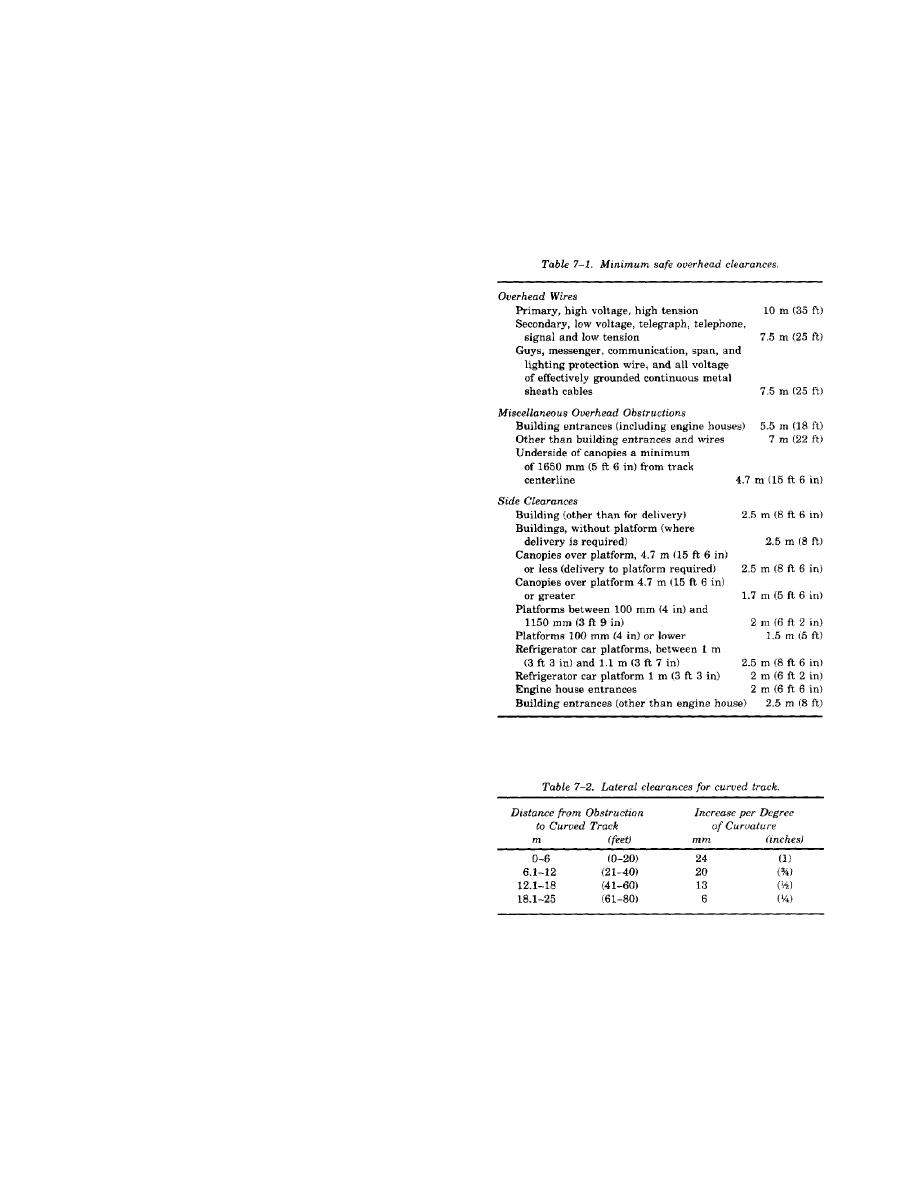
TM 5-840-2
classification yard, and the tracks serving the
bituminous concrete, portland cement concrete,
shelter will lead from the classification yard.
precast concrete planks, wood planks,
prefabricated rubber planks, modular plastic
7-3. Dimensions and clearances.
crossings, used rail, two-component epoxy and
rubber. Details of these methods and their
Dimensions of rail facilities for storage depots
advantages can be found in TM 5-627/MO-
within CONUS will be based on the standard
103/AFM 91-33.
American track gage of 1.43 m (4 ft 8 in).
Overhead clearances and platform heights are
measured from top of rail, and side clearances are
measured from centerline of track. Any item that
protrudes within the limits of these clearances is
dangerous, and protection must be provided by
appropriate warning signs or devices. For example,
telltales must be used for overhead clearances
ranging between 5.5 and 7 m (18 and 22 ft). The
standard clearances are listed in table 7-1; local
clearances or special conditions may require greater
clearances. On curves, side clearances listed in table
7-1 will be increased 25 mm (1 in) per degree of
curvature, with a maximum increase of 450 mm (18
in). When the fixed obstruction is on tangent track
but the track is curved within 25 m (80 ft) of the
obstruction, the lateral clearances shall be increased
according to table 7-2. In a storage depot, train
speeds should not be high enough to warrant
superelevation of the track; however, if it is
deemed necessary to superelevate any trackage,
horizontal clearance on the inside rail shall be
increased 3 times the amount of superelevation of
the outside rail in addition to the 25 mm (1 in) per
degree of curvature.
7-4. Crossing.
Crossing surfaces must be as smooth as possible,
and the materials selected for this purpose must be
suitable for the type of traffic using the crossing.
Although it may be desirable to match the material
and texture of approach pavements, consideration
must be given to a material and an installation that
is economical to maintain and which will have a
long service life. Materials such as portland cement
concrete or bituminous concrete are economical to
install, but are costly to remove and replace. Wood
plank and prefabricated materials may be a little
more costly to install, but are removable and
reusable and therefore are more economical to use
in the long run. Furthermore, they are easily
removed and replaced, they facilitate the inspection
of the track. Materials suitable for crossings are:
7-3



 Previous Page
Previous Page
